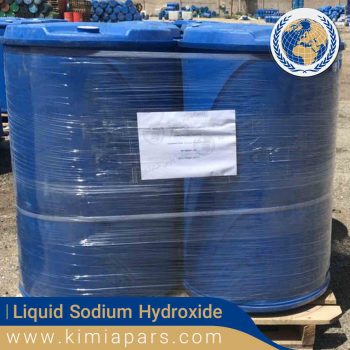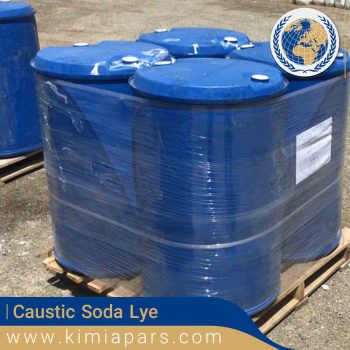

Liquid Sodium Hydroxide 48±1%
- Description
- Analysis of Liquid Sodium Hydroxide
Description
Liquid Sodium Hydroxide
Chemical Formula of Liquid Sodium Hydroxide: NaOH
Other names: Sodium hydroxide liquid | Sodium Oxidanude, Caustic soda 50% | Caustic soda 30% | Lye | Ascarite | White Caustic | Sodium Hydrate | Caustic Lye |
Grade: Membrane Grade | Mercury Grade
Appearance: White
Usages:
- Pulp and Paper Industry (Pulp Cooking)(to de – ink water)
- Extract Alumina (Aluminum Industry)
- Industrial Chemicals
- Adjusting PH in producing biodiesel from vegetable oil
- Cleaning Agent to cleaning food processing equipment and bottles
- Drying Air to absorb CO2 from gases
- Removing grease and paint from metal
- Textile Industry Mercerizing cotton
- Making Pretzels
- Peeling Vegetable and leather
- Regenerating resins and water
Packaging: 23 MT Tanker and 230 kg Barrels
Price: Negotiable, depending on the amount of the order
Min order: 1*20 ft. FCL
Delivery time: Within 5-10 days after we receive the payment
Origin: Iran
Sodium hydroxide, also known as caustic soda or lye, is a strong and highly caustic inorganic compound with the chemical formula NaOH. It is a white, crystalline solid that readily dissolves in water to form a clear, colorless solution. When dissolved in water, sodium hydroxide ionizes to form hydroxide ions (OH-) which make it an extremely alkaline substance with a pH value of approximately 14.
The industrial production of liquid sodium hydroxide is a critical process as it is widely used in various industries such as soap and detergent production, pulp and paper manufacturing, water treatment, and more. In this article, we will discuss the properties, production, and various industrial applications of liquid sodium hydroxide.
Properties of Liquid Sodium Hydroxide
Physical Properties: Sodium hydroxide is a white, hygroscopic solid that readily absorbs moisture from the air. It has a density of 2.13 g/cm3 and a melting point of 318.4 °C. The solubility of sodium hydroxide in water is highly dependent on temperature, with higher solubility at higher temperatures.
Chemical Properties: Sodium hydroxide is a strong base that reacts with acids to form salt and water. It also reacts with metallic oxides, carbonates, and hydrogen carbonates to form salts. When dissolved in water, sodium hydroxide ionizes to form hydroxide ions, which makes it an extremely alkaline substance.
Production of Liquid Sodium Hydroxide
Sodium hydroxide is produced through two main processes: the chloralkali process and the electrolysis of sodium chloride. The chloralkali process involves the electrolysis of a solution of sodium chloride and is the most widely used method for producing sodium hydroxide on an industrial scale. The process is carried out in a cell that is divided into two compartments by a semi-permeable membrane. An electrical current is passed through the solution, which causes the sodium and chloride ions to migrate towards the electrodes. At the anode, chloride ions are oxidized to chlorine gas, while at the cathode, sodium ions are reduced to form sodium hydroxide.
The electrolysis of sodium chloride is a similar process to the chloralkali process, but it is carried out using a different electrolyte. In this process, a solution of sodium chloride is electrolyzed to produce sodium hydroxide and hydrogen gas. This process is less commonly used due to the high cost of the electrolyte and the difficulty in recovering the hydrogen gas.
Industrial Applications of Liquid Sodium Hydroxide
- Soap and Detergent Production: Sodium hydroxide is used in the production of soaps and detergents as a strong base to neutralize fatty acids. The reaction between sodium hydroxide and fatty acids produces soap, which is then mixed with other ingredients to produce detergents.
- Pulp and Paper Manufacturing: Sodium hydroxide is used in the production of pulp and paper as a bleaching agent. It is used to remove lignin and other impurities from wood fibers, which allows the fibers to be made into paper. Sodium hydroxide is also used to control the pH of the pulping process and to remove ink and other impurities from recycled paper.
- Water Treatment: Sodium hydroxide is used in water treatment to adjust the pH of water to make it less acidic. It is also used to remove impurities from water, such as heavy metals and suspended solids.
Caustic Soda Lye Analysis |
| CONTENT | Test Result |
|---|---|
| Purity | 49.5±1 min Wt% |
| Na2CO3 | 0.4% MAX Wt% |
| NaCl | 15 Max Wt.ppm |
| Na2SO4 | 15 Max |
| Aluminium(Al2O3) | 10 Max Wt.ppm |
| Total Fe | 6 Max Wt.ppm |
| SiO2 | 5 Max Wt.ppm |
| Total Ca | 10 Max Wt.ppm |
| Hg | 0.5 Max Wt.ppm |
| NaClO3 | 120 Max Wt.ppm |
